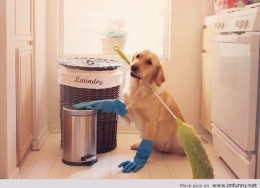It is important that your home is a safe environment whether for yourself or for your tenant if you are a landlord
The Royal Society for the Prevention of Accidents (RoSPA) indicates that accidents in the home account for about 6,000 deaths each year, and 2.7 million A&E visits.
There are a number of basic safety precautions that you need to be aware of both for your own home and for any rented property you may have.
Slipping or Tripping
RoSPA states that injury due to a fall is the most common form of accident and the risk of serious injury rises in relation to the age of the person. For this reason, it is important that you avoid clutter so that you are able to move around without the fear of tripping over wires and other obstacles. Therefore if you are renting your property as being furnished, minimalism is the order of the day. Also, ensure that areas are well lit, particularly danger spots such as the head and foot of the stairs. By the way, if you do have stairs make sure there is a handrail, and that the stair treads are secure. Any carpet on the stairs needs to be secured by grippers and stair rods, and the nosings should be checked to make sure the carpet is not loose. Slips may occur anywhere in the house, particularly on floors with a shiny surface and bathrooms or other places where water is splashed onto the floor. If you are using mats make sure they have a non-slip lower surface. Anti-slip paint is a tremendous idea for the home or for a rented property. It can be invaluable for communal areas, staircases or for potentially hazardous locations such as any premises with steps or a ramp to the front door. Heavy-duty anti-slip paint can be applied to both internal and external floor surfaces. It contains a gritty element which increases resistance at the surface and so reduces the chance of slipping.
Fire and the need for Smoke Alarms
According to Home Office national statistics, the fire and rescue service (FRS) attended 167,150 fires in England in the financial year 2017/18. In that time period there were 334 fire-related fatalities and 7,290 non-fatal casualties. The rate of fatalities was found to increase with increasing age of victims. Although most fires start in the kitchen due to cooking appliances, electrical appliances are responsible for many fire-related fatalities. Because most fires start between 10 pm and 6 am, when people are asleep, it is imperative that you have a working smoke alarm and test it regularly. Indeed in 2017/18, the most common cause of fire-related deaths was people being overcome by gas or smoke.
Gas Appliances and Carbon Monoxide Alarms
Gas appliances should be checked once a year by a Gas Safe registered engineer, and you should have a carbon monoxide alarm installed which complies with British Standard EN 50291. This type of standard alarm is recommended by the Health and Safety Executive, which is Britain’s national regulator for health and safety in the workplace.
Electricity Hazards and Safety Checks
Electricity is essential for everyday life, but you must recognise the potential dangers which could seriously harm or even kill. A simple visual check is the first essential requirement in maintaining safety. Make sure that wires are not frayed or exposed at the junction with the plug, and that plugs don’t have brown scorch marks on them. Make sure that extension leads are not overloaded or getting warm. Also ensure there are no leads or live electricity near any water, and don’t use electrical equipment or switches with wet hands. It is also good practice to turn appliances off at the socket when not in use, and it is advisable to have a residual current device (RCD) installed. An RCD gives more protection from serious electric shock than a circuit breaker should you touch a live wire. It is recommended that homeowners should have a periodic electrical inspection carried out by an accredited registered electrician every 10 years and that this inspection should be carried out every 5 years in a rented property. After the inspection, you will be given an Electrical Installation Condition Report which you should retain as proof that the electrics of the house are in good working order. It should also be noted that any portable appliances that are provided in a rented property should be tested appropriately.
Failure to be aware of the potential hazards in your home could result in disastrous consequences for yourself, and possible legal action against you for any rented properties you own.




 POSTED BY
POSTED BY 

